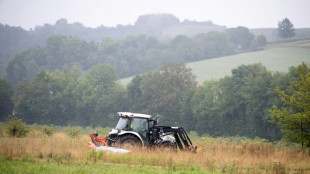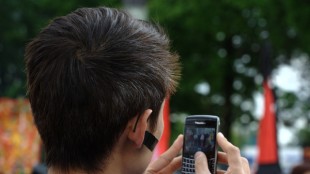-
 Australia stunned by Belgium, joining USA on Davis Cup scrapheap
Australia stunned by Belgium, joining USA on Davis Cup scrapheap
-
Spinners power India to win over Pakistan in Asia Cup

-
 Bolsonaro conviction 'not a witch hunt,' Lula tells Trump in NYT op-ed
Bolsonaro conviction 'not a witch hunt,' Lula tells Trump in NYT op-ed
-
'Demon Slayer' tops N.America box office with record anime opening

-
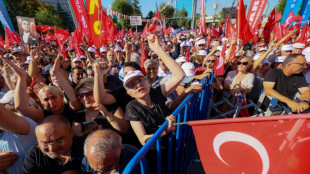 Tens of thousands join Ankara protest ahead of court showdown
Tens of thousands join Ankara protest ahead of court showdown
-
Haaland-inspired Man City inflict derby demolition on Man Utd

-
 Vuelta triumph caps Vingegaard's fight back from the brink
Vuelta triumph caps Vingegaard's fight back from the brink
-
French runner Gressier thanks anti-doping body for his world title

-
 Romania summons Russian ambassador over drone 'threat'
Romania summons Russian ambassador over drone 'threat'
-
'Palestine wins the Vuelta': Gaza demo halts cycling finale in Madrid

-
 Vuelta final stage abandoned due to pro-Palestinian protest, Vingegaard crowned
Vuelta final stage abandoned due to pro-Palestinian protest, Vingegaard crowned
-
PSG maintain perfect start to Ligue 1, Ethan Mbappe strikes late for Lille

-
 Alleged Kirk killer had 'leftist' beliefs, Utah governor says
Alleged Kirk killer had 'leftist' beliefs, Utah governor says
-
Shakespeare family tragedy 'Hamnet' wins top Toronto film prize

-
 Record-breaking England crush Scotland to reach Women's Rugby World Cup semi-finals
Record-breaking England crush Scotland to reach Women's Rugby World Cup semi-finals
-
Noren upstages Ryder Cup stars to win PGA Championship at Wentworth

-
 Lookman to miss Atalanta's Champions League opener at PSG, says Juric
Lookman to miss Atalanta's Champions League opener at PSG, says Juric
-
Fraser-Pryce, Jamaica's sprint warrior queen

-
 Vuelta final stage abandoned amid huge pro-Palestinian protest
Vuelta final stage abandoned amid huge pro-Palestinian protest
-
India limit Pakistan to 127-9 in key Asia Cup T20 clash

-
 Ethan Mbappe strikes late to give Lille win over Toulouse
Ethan Mbappe strikes late to give Lille win over Toulouse
-
Fans set aside boycott calls to watch India-Pakistan cricket clash

-
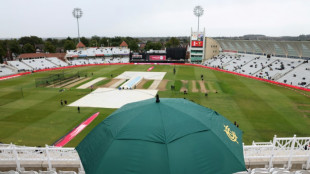 Rain denies England and South Africa a series decider
Rain denies England and South Africa a series decider
-
Seville and Jefferson-Wooden enjoy maiden world titles, US savour field of gold

-
 Itoje to rehab with England as Farrell omitted from training squad
Itoje to rehab with England as Farrell omitted from training squad
-
Marc Marquez rolls out Messi-inspired celebration as seventh MotoGP title looms

-
 Seville delighted to win world 100m title in front of Bolt
Seville delighted to win world 100m title in front of Bolt
-
Seville sparks Jamaican men's sprint renaissance

-
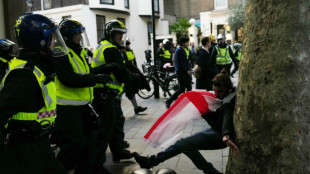 Starmer says UK won't tolerate racial intimidation after far-right rally
Starmer says UK won't tolerate racial intimidation after far-right rally
-
Jefferson-Wooden embraces the moment and basks in 100m world title

-
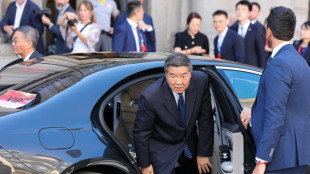 New round of US-China trade talks kicks off in Madrid
New round of US-China trade talks kicks off in Madrid
-
France edge Ireland in Women's Rugby World Cup quarter-final thriller

-
 Seville wins Tokyo 100m for first Jamaican men's sprint title in 10 years
Seville wins Tokyo 100m for first Jamaican men's sprint title in 10 years
-
Marc Marquez nears seventh MotoGP title after San Marino triumph

-
 Jefferson-Wooden surges to women's 100 metres world title
Jefferson-Wooden surges to women's 100 metres world title
-
Former boxing world champion Hatton dies at 46

-
 Seville wins Tokyo 100m for first Jamaican sprint title in 10 years
Seville wins Tokyo 100m for first Jamaican sprint title in 10 years
-
France's Gressier shocks field to win world 10,000m gold

-
 Marc Marquez nears seventh MotoGP title after San Marino win
Marc Marquez nears seventh MotoGP title after San Marino win
-
'Smart' Inoue beats Akhmadaliev by unanimous decision

-
 Isak not in Liverpool squad for Burnley game
Isak not in Liverpool squad for Burnley game
-
Badminton star Li leads all-China sweep at Hong Kong Open

-
 Former boxing world champion Hatton dead at 46
Former boxing world champion Hatton dead at 46
-
Lyles leads Thompson and Tebogo into world 100m final

-
 Defending champion Richardson struggles into 100m world final
Defending champion Richardson struggles into 100m world final
-
Former boxing world champion Hatton dead at 46: Press Association

-
 Spain PM 'proud' of pro-Palestinian protests at Vuelta
Spain PM 'proud' of pro-Palestinian protests at Vuelta
-
McLaughlin-Levrone sails through 400m heats at world championships

-
 Polish president critical of Germany to visit Berlin
Polish president critical of Germany to visit Berlin
-
Crawford shocks Alvarez for historic undisputed super middleweight world title

Iconic Iran river threatened by droughts, diversions
The famed river bridges of the Iranian city of Isfahan are a beloved tourist draw -- but much of the time their stone arches span just sand and rocks, not water.
Drought and upstream water diversions have seen the Zayandeh Rood, "fertile river" in Persian, run dry since 2000, with only rare exceptions.
Sitting on a quay with two friends, 60-year-old Jalal Mirahmadi gazed with melancholy at the riverbed, which became the site of a farmers' protest late last year.
"When I was a child, the water flowed under the arches of the bridge and sometimes overflowed to spill into the surrounding streets," he sighed.
The river runs nearly 400 kilometres (250 miles) from the Zagros Mountains in the west to Lake Gavkhouni in the east, making it the longest waterway in central Iran.
On its way through Isfahan, it meanders under several beautifully crafted bridges from the 17th century, the city's golden age when it was the Persian capital.
"When the water of Zayandeh Rood flows, the bridges have a special appearance and beauty," said Ali Mohammad Fassihi of the Ministry of Heritage and Tourism.
"These historic bridges are meaningless without water."
- Heat and drought -
Largely arid Iran, like other nearby countries, has suffered chronic dry spells and heat waves for years, which are expected to worsen with climate change.
Iran is sometimes hit by summertime blackouts when the blistering heat drives up air conditioner use while low rainfall reduces the water reservoirs of hydro-electric dams.
The reduced flow of the Zayandeh Rood, however, is also man-made because much of its water has been diverted to supply neighbouring Yazd province.
Last November, tens of thousands of people, including farmers, gathered in the dry riverbed to complain about the drought and blame officials for diverting water.
Security forces fired tear gas when the protest turned violent and said they arrested 67 people.
The municipality later launched an awareness campaign on the fate of the river, with several signs erected in Isfahan, the country's third-largest city with two million people.
Young people in the city say they are used to only seeing the river's dry bed.
High school student Amir, 18, said he rarely goes there because it "is no longer pleasant without water".
"Most of my memories and those of my generation are associated with the dryness of the river," he lamented.
- Riverside selfies -
From time to time, authorities briefly open the upstream dam's floodgates to irrigate wheat fields east of Isfahan -- to the delight of thousands who quickly flock to the river.
This happened in mid-May when locals and tourists rushed to the waterway to capture the ephemeral views with their eyes and with selfies.
Under the shade of trees on the banks, families drank tea and smoked shisha. Some strolled and others pedalled swan-shaped boats, which were back in use after baking in the dust.
At the majestic Si-o-Se Pol Bridge, portrait painter Mohammad-Reza Abdollahi, 50, drew the yellow-brick bridge while awaiting clients.
"I hadn't been to Isfahan for 10 years because there were few tourists due to the drought in Zayandeh Rood," he said.
He had only planned to stay for a week or two, but said that when the dams were opened, "I extended my stay".
Mahnaz, a 27-year-old art student holding her camera, said she was delighted to capture the river's beauty.
"I didn't have good photos of the bridge's reflection in the river because it's been dry since I learnt photography," he said.
- 'Like a mother' -
Mirahmadi, the 60-year-old man, looked on at visitors to the river with mixed feelings.
"Do you see this crowd today?" he said. "In a few days, when there is no more water in the river, you will only see old men like us. And we will come just to remember."
The floodgates had been closed again and already the change was obvious: water flowed only under two arches of the Khajou Bridge, which is known for its decoration and its steps descending into the current.
"Zayandeh Rood is the meeting place for all the people of Isfahan," said Borna Moussavi, who campaigns for the preservation of the river and the heritage of Isfahan.
"When they are happy, they come to this river and its bridges to celebrate. And if they are sad, they come here to calm down."
For him, the complete disappearance of the river would be akin to the loss of a loved one.
"Zayandeh Rood is like a mother to us," Moussavi said.
Mirahmadi felt similarly: "This river has kept Isfahan alive.
"If there is no river, Isfahan will become a desert, and in four or five years everyone will abandon the city."
G.Stevens--AMWN
